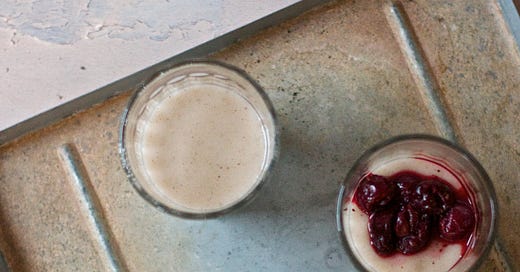Ingredient Spotlight: Mahleb
... and why it's time to ditch the artificial almond extract!* Also, a recipe for Mahleb Muhallabiah with Sour Cherry Compote
Hello, and welcome to Newsletter No 28 here on Substack! Thank you for stopping by. If you are already subscribed, thank you - seeing so many of you read my newsletters each week means the world to me! And if you are not yet a subscriber, grab a seat if you are interested in recipes as well as tips and tricks to make the most of our increasingly eclectic pantries and a good dose of my at times random musings about all things food. And do make sure you hit that subscribe button below if you don’t want to miss any future posts!
“When crushed and sprinkled over pastries it tastes like marzipan, but taken straight from the spice jar, it tastes first like pine nuts, then like bitter wood”
Kate Lebo, The Book of Difficult Fruit
As I mentioned in my 2024 Food Trends post at the start of the year, there has been a 550% increase in searches for Mahleb in 2023. Given this, and since stone fruit season will soon be upon us (Mahleb being the perfect partner in crime for anything made with stone frui…
Keep reading with a 7-day free trial
Subscribe to Real Simple Food to keep reading this post and get 7 days of free access to the full post archives.




